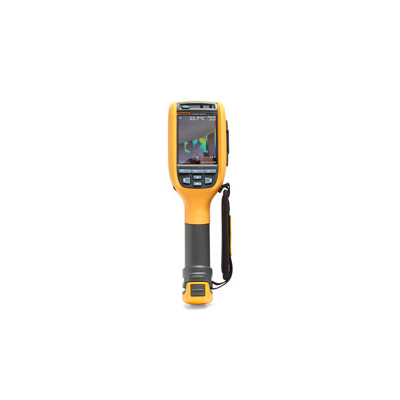Fluke Ti Series Vs TiR Series Review – What Are You Doing With It?
 Even the most versatile tools won’t do everything. I’m sorry to tell you but the thermal camera that also takes electrical readings, tests fiber optic cables, analyzes combustible gases, and cooks you scrambled eggs hasn’t been invented yet. Joking aside, the lesson is that you need choose a tool that, while flexible, is tailored to tackle your specific job. So how do you choose a Fluke camera?
Even the most versatile tools won’t do everything. I’m sorry to tell you but the thermal camera that also takes electrical readings, tests fiber optic cables, analyzes combustible gases, and cooks you scrambled eggs hasn’t been invented yet. Joking aside, the lesson is that you need choose a tool that, while flexible, is tailored to tackle your specific job. So how do you choose a Fluke camera?
In a nutshell, the Fluke Ti series cameras are most effective in industrial and electrical environments and the TiR series is designed to deal with building diagnostics. Firstly, the major difference is in the respective cameras’ temperature ranges. The Ti series is going to offer higher temperature ranges (up to 662°F on Ti125) to ensure that you can see overheating targets in an industrial environment that can get well over 300°F. The TiR cameras that cater to building inspection have a much lower temperature range (up to 302°F on TiR125) but have a thermal sensitivity that is higher than the Ti series. So this means that you won’t be able to detect as wide a range of temperatures but the small differences in temperature will be more visible on the TiR. This is especially useful in building applications where moisture can affect very small temperature differentials.
As an extension of this concept the TiR offers a smaller span setting than the Ti. This refers to the difference between the highest and lowest temperatures in the thermographic image. In manual mode, the TiR can show a span as low as 2.0°C allowing you to see an entire thermogram in the range of a couple degrees. Once you’ve targeted a potential problem you want to keep your span as narrow as possible and the TiR is much more effective in this regard.
An easy two step process for selecting the appropriate Fluke camera:
- Select whether your application is (a) industrial/electrical or (b) building diagnostics.
- If you answered (a) get a Ti series camera. If you answered (b) get a TiR.
Simple as that! Seriously though, I hope this information is helpful in understanding the distinctions between the different types of cameras available. Questions and comments welcome.






Add new comment